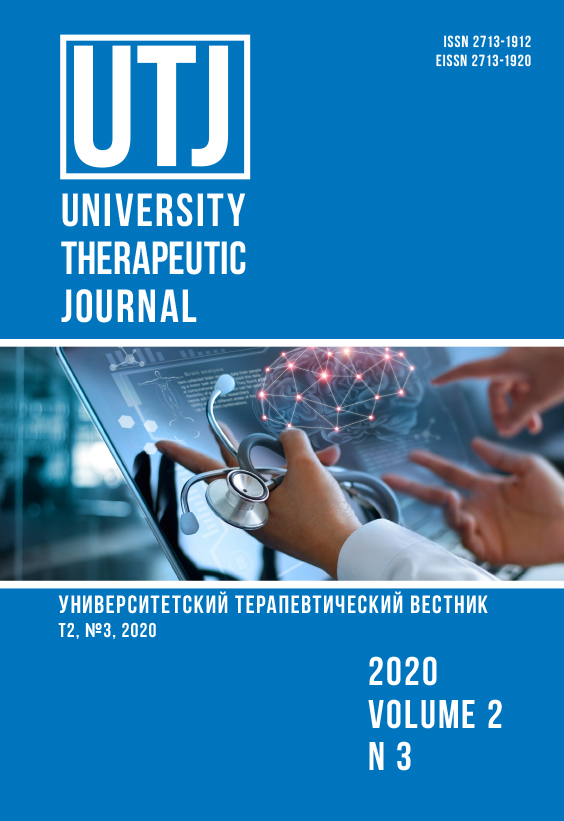Osteopenia as a manifestation of hereditary disorders of connective tissue
Abstract
Marfan syndrome (MS) is characterized by a violation of bone metabolism, leading to its depletion of calcium salts and the development of osteopenia. Bone remodeling in MS is associated with activation of the TGF-β signaling pathway. Features of bone metabolism and the degree of osteopenia in persons of young age with marfanoid habitus (MH) has not previously been assessed. Materials and methods. The study included 119 males aged 18 to 25 years (mean age 20.4±1.5 years) from among those examined in the state medical "Mariinsky city hospital" (St. Petersburg) with a diagnosis of malnutrition (mean body mass index 16.38±1.1 kg/m2). All of them underwent anthropometric and phenotypic examinations, 80 young men underwent laboratory tests to determine markers of bone formation (alkaline phosphatase, osteocalcin), as well as osteodensitometry of the lumbar spine (L1-L4). Results. For men with MH compared to a control characterized by lower values of bone mineral density (BMD): of 1.23±0,73 vs 0,34±0,80 (p=0.00001). A marked decrease in BMD less than -1.5 STD is detected only in individuals with MH (35.3% vs 0%, p=0.01). The level of osteocalcin and alkaline phosphatase was significantly higher in boys with MH, which indicates activation of bone formation, and the excess of the threshold values of these parameters is determined only in patients with MH. Exceeding the threshold values of β-CrossLaps (a marker of collagen degradation) was found in 84.0% of the study group and 35.7% of the control group (p=0.002). Identified the changes of bone metabolism are associated with activation of signaling pathways of TGF-β - exceeding the threshold values of both fractions was determined significantly more frequently in patients. Men with MH characterized by a pronounced decrease in BMD, associated witharachnodactyly, dolichostenomely, deformation of the chest and high palate. For young men with MH characterized by an imbalance between bone formation and destruction, which is associated with high activity of TGF-β signaling pathway.


